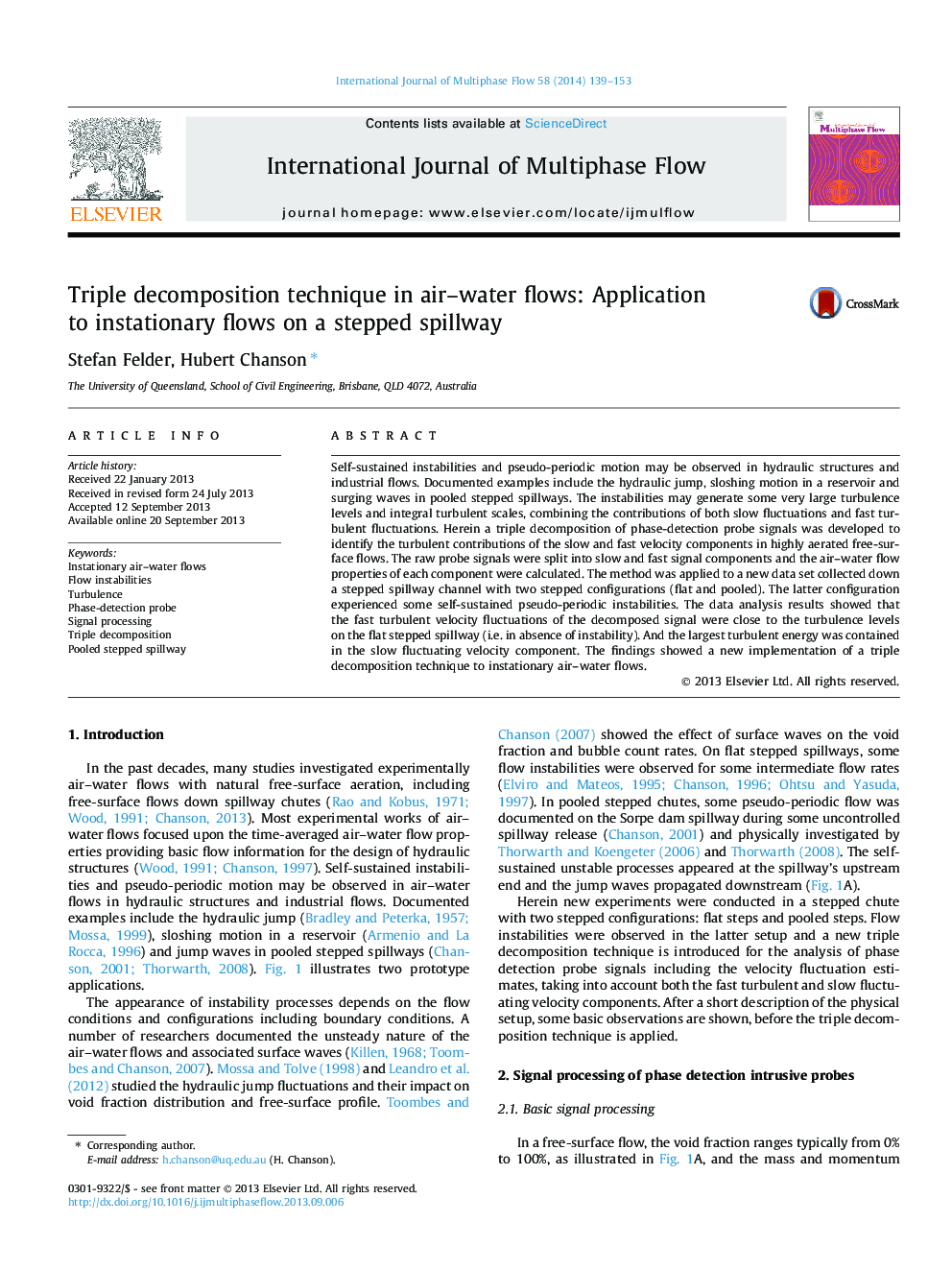| Article ID | Journal | Published Year | Pages | File Type |
|---|---|---|---|---|
| 667243 | International Journal of Multiphase Flow | 2014 | 15 Pages |
Abstract
Self-sustained instabilities and pseudo-periodic motion may be observed in hydraulic structures and industrial flows. Documented examples include the hydraulic jump, sloshing motion in a reservoir and surging waves in pooled stepped spillways. The instabilities may generate some very large turbulence levels and integral turbulent scales, combining the contributions of both slow fluctuations and fast turbulent fluctuations. Herein a triple decomposition of phase-detection probe signals was developed to identify the turbulent contributions of the slow and fast velocity components in highly aerated free-surface flows. The raw probe signals were split into slow and fast signal components and the air-water flow properties of each component were calculated. The method was applied to a new data set collected down a stepped spillway channel with two stepped configurations (flat and pooled). The latter configuration experienced some self-sustained pseudo-periodic instabilities. The data analysis results showed that the fast turbulent velocity fluctuations of the decomposed signal were close to the turbulence levels on the flat stepped spillway (i.e. in absence of instability). And the largest turbulent energy was contained in the slow fluctuating velocity component. The findings showed a new implementation of a triple decomposition technique to instationary air-water flows.
Related Topics
Physical Sciences and Engineering
Chemical Engineering
Fluid Flow and Transfer Processes
Authors
Stefan Felder, Hubert Chanson,
